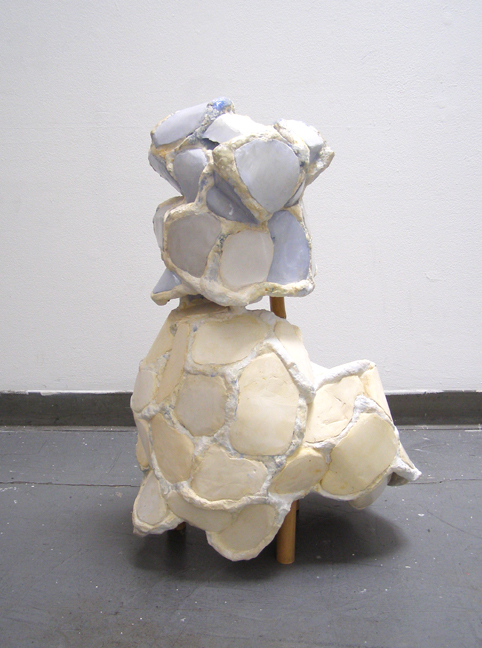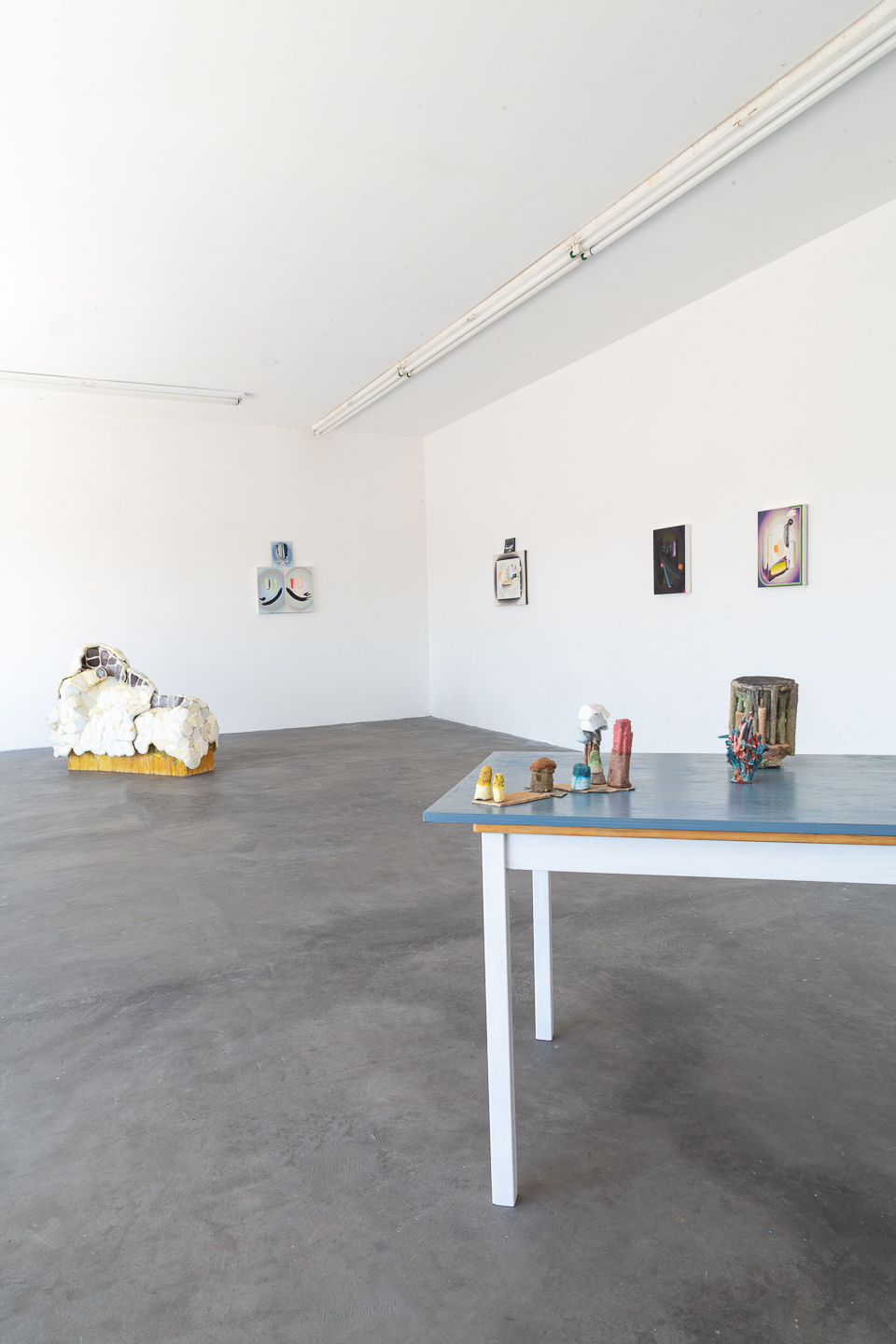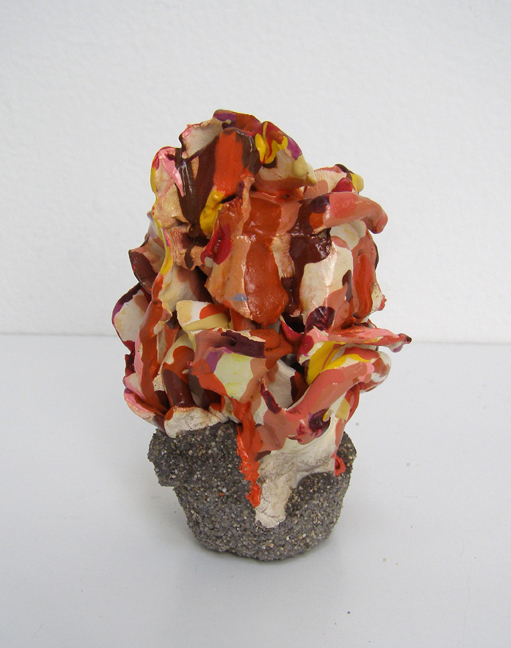Group Show
Visions + StructuresLos Angeles | September 7 - October 19 2019
Artists: David McDonald, Raychael Stine Press: Curate


'Visions + Structures' brings together a series of works called “Vision Paintings" by New Mexico based painter Raychael Stine and sculptures by David McDonald, which he refers to as “Structures". Both artists work meander through loose spatial territory, opening space while deliberately avoiding definition and categorization. Both artists have rigorous formal training, and a healthy desire to abandon it. Stine is the associate Professor of Painting and Drawing at the University of New Mexico and McDonald is a Guggenheim Fellow, among other accolades and awards. Other than their contrarian stance, ice-cream colored marks and forms arc and curve though space and unusually they both have galleries in Marfa, Texas.
![]()
![]()
![]()
Visions
Raychael Stine continues to elude any possibility of formal definition in her new paintings. Using elusive amalgamations of representational and abstract imagery, she moves fluidly through uncharted territory with ease, her commanding use of slashing, broad, brushstroke combined with the courage to confront the daunting compositional “problems” she creates for herself, while coming up with innovative, flamboyant, unorthodox solutions that in turn create astounding results. The importance of openness and informality of her stylistic discoveries allow the viewer to share these discoveries as the paintings continue to reinvent themselves.
The "Vision paintings" are representations; they are pictures of distilled sensate experiences. Giving a more nuanced context for some of the other paintings (portraits and still lives) which may at times appear to be very straightforward, or may at times appear completely abstract, these vision paintings further enforce the work as circular rather than disparate or dual. They mark a transitional space between material and picture, object, image and painting. “vision paintings” explore the inside and outside of the body of work at the same time, without the presumed subject (dogs, objects, pictures). They sometimes document and index other works as they are being made, incorporating time, light, and space from memory, from pictures, from the physical object of paint(ing), from the previous stories told, and simultaneously, describe various formal aspects. I like to say they are pictures of witness.
Recently the vision paintings have embodied a shift between referencing actual visual phenomenon, they have begun to suggest spiritual visions, dream spaces and the possibility of apparitions or the space between something we consider or assume to be real or reasonable and something unreasonable or unsubstantiated. Paint is a substance so it embodies and gives form to the formless.
![]()
![]()
![]()
+ Structures
David McDonald’s abstract paintings and sculptures are composed of unremarkable materials such as raw and painted wood, bricks, paper, cement, and plaster an aesthetic rooted in the organic and handmade. Frequent motifs in McDonald’s works include cubes, cylinders, and enamel-coated cement columns resembling tombstones, and their off-kilter compositions suggest a tension between order and chaos. Sometimes titled as self-portraits, McDonald’s abstract forms can be viewed as surrogates for the self.For McDonald's work in "Visions + Structures" the artist refers us to a Zen saying where teachers often say that if you want to understand Buddha nature go ask a tree. A tree doesn’t call itself a tree, only we do. It is not a metaphor for anything and it manifests itself as bark, roots, trunk, moving leaves, etc. A tree never names itself, it just is. McDonald would like to make sculpture that works this way. Sculpture that is not a metaphor, not a narrative, not a depiction, only what it is. Material, color, size, weight, and location as meaning, nothing outside of itself, much like a tree. All objects have intrinsic properties that pertain only to themselves, why not the same for a sculpture? All that an object asks is that you pay attention.
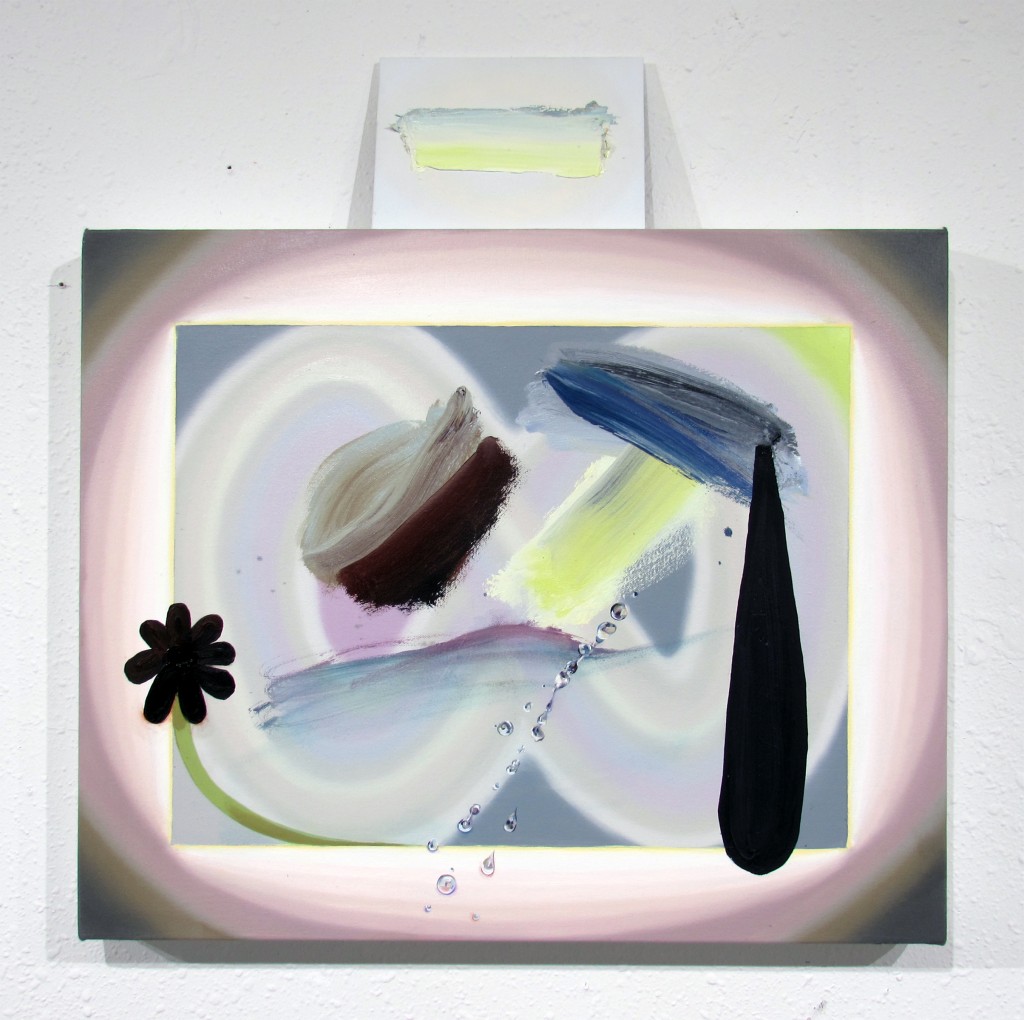


Visions
Raychael Stine continues to elude any possibility of formal definition in her new paintings. Using elusive amalgamations of representational and abstract imagery, she moves fluidly through uncharted territory with ease, her commanding use of slashing, broad, brushstroke combined with the courage to confront the daunting compositional “problems” she creates for herself, while coming up with innovative, flamboyant, unorthodox solutions that in turn create astounding results. The importance of openness and informality of her stylistic discoveries allow the viewer to share these discoveries as the paintings continue to reinvent themselves.
The "Vision paintings" are representations; they are pictures of distilled sensate experiences. Giving a more nuanced context for some of the other paintings (portraits and still lives) which may at times appear to be very straightforward, or may at times appear completely abstract, these vision paintings further enforce the work as circular rather than disparate or dual. They mark a transitional space between material and picture, object, image and painting. “vision paintings” explore the inside and outside of the body of work at the same time, without the presumed subject (dogs, objects, pictures). They sometimes document and index other works as they are being made, incorporating time, light, and space from memory, from pictures, from the physical object of paint(ing), from the previous stories told, and simultaneously, describe various formal aspects. I like to say they are pictures of witness.
Recently the vision paintings have embodied a shift between referencing actual visual phenomenon, they have begun to suggest spiritual visions, dream spaces and the possibility of apparitions or the space between something we consider or assume to be real or reasonable and something unreasonable or unsubstantiated. Paint is a substance so it embodies and gives form to the formless.


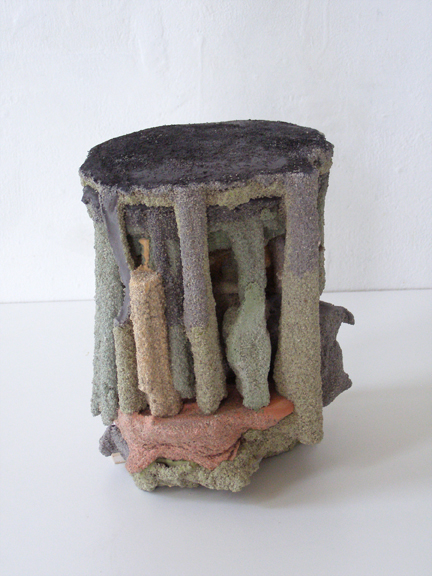
+ Structures
David McDonald’s abstract paintings and sculptures are composed of unremarkable materials such as raw and painted wood, bricks, paper, cement, and plaster an aesthetic rooted in the organic and handmade. Frequent motifs in McDonald’s works include cubes, cylinders, and enamel-coated cement columns resembling tombstones, and their off-kilter compositions suggest a tension between order and chaos. Sometimes titled as self-portraits, McDonald’s abstract forms can be viewed as surrogates for the self.For McDonald's work in "Visions + Structures" the artist refers us to a Zen saying where teachers often say that if you want to understand Buddha nature go ask a tree. A tree doesn’t call itself a tree, only we do. It is not a metaphor for anything and it manifests itself as bark, roots, trunk, moving leaves, etc. A tree never names itself, it just is. McDonald would like to make sculpture that works this way. Sculpture that is not a metaphor, not a narrative, not a depiction, only what it is. Material, color, size, weight, and location as meaning, nothing outside of itself, much like a tree. All objects have intrinsic properties that pertain only to themselves, why not the same for a sculpture? All that an object asks is that you pay attention.


